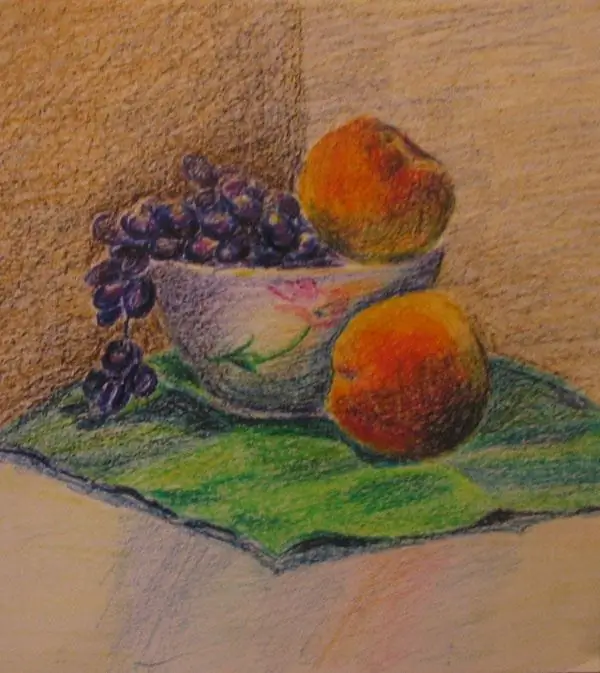Oil pastels differ in many ways from dry pastels. And it is not recommended to use them together. As the name suggests, oil pastels bind the pigment in the oil to create a dense and oily texture. Of course, in comparison with soft pastels, the choice of colors is more limited, there are fewer gradations of light. However, the color ranges of this material are gradually increasing.

Instructions
Step 1
Color layers can be created with oil pastel crayons in the same way as with soft pastels or pencils. However, due to their greasiness, there is a tendency for the paper grains to clog rapidly. Therefore, try to immediately work with oil pastels lightly, without pressing hard on the paper. It is best to use just the tip of a pastel stick. And try to keep it closer to the end - this way you won't be able to put too much pressure on it.
Step 2
You will not be able to wash oil pastels in the usual way. But it can be washed. If you are mistaken, or want to change part of the picture, take a rag, dip it in white spirit or turpentine and gently erase the color. Then wait until the paper is dry and continue stroking.
Step 3
Let's try to draw a small still life. So, draw the outlines of the orange and lemon (for example) with yellow pastels. In this case, it is better to use a bluish-gray paper so that you can provide a contrast between bright yellow and orange shades.
Step 4
Draw diagonal lines of orange on both fruits and add yellow. Keep the strokes open so you can add color without jamming the paper. After setting the primary colors, you can introduce more contrast and use an additional blue on the orange.
Step 5
Stir in the main color to the shadows on both fruits to neutralize them. For added contrast, add a slightly darker gray around the fruit than the used paper. Now the shape is created, highlights are added and shadows are emphasized.
Step 6
Experiment with mixing colors to give the fruit a body and texture. Add orange behind and below the fruit with light touches of pastel crayons. This is necessary in order to tie the fruit to the background. Well, a simple still life is ready.






